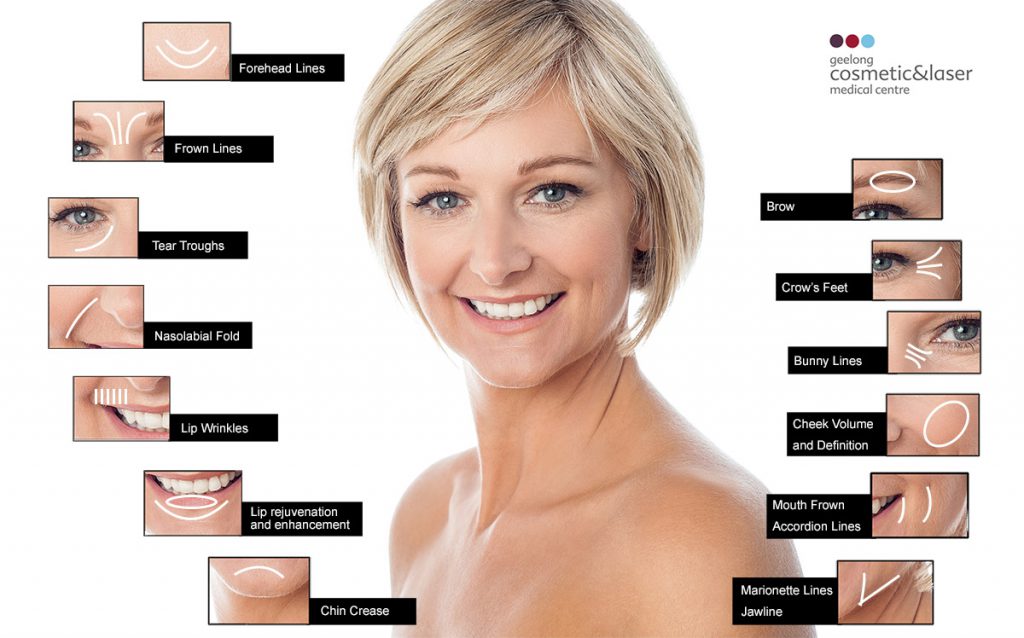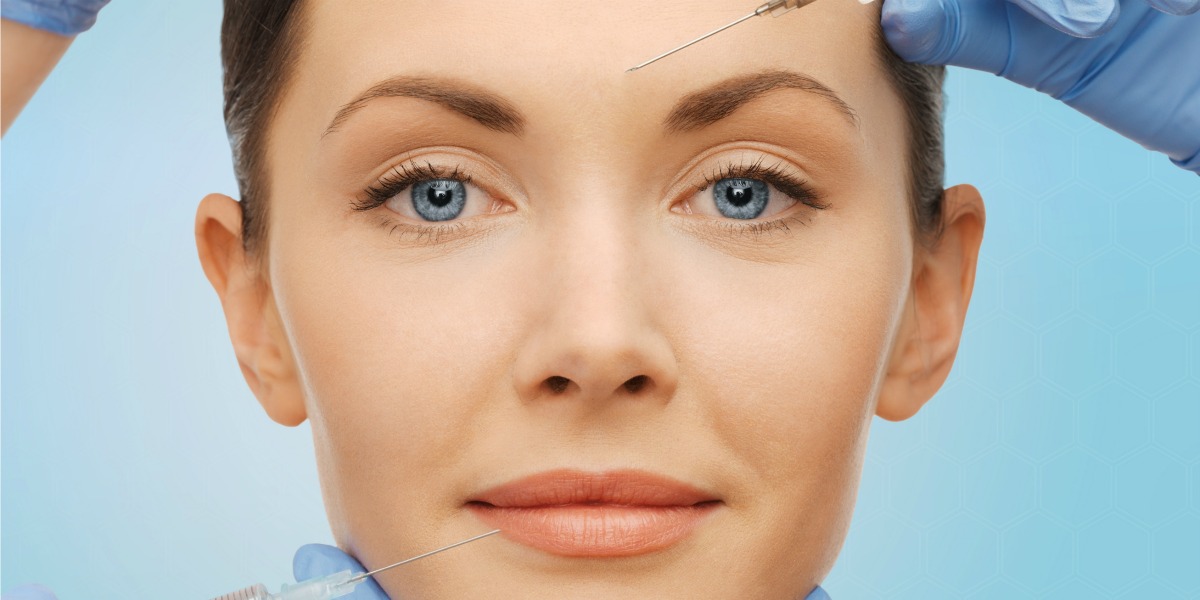In this article, we discuss everything you need to know about Dermal Fillers.
Very rarely does a patient come to the practice and ask to have their cheeks, tear troughs, or temples treated. I often find that is exactly what people need, and these areas are now some of the most common procedures we perform.
Dermal fillers became popular around twenty years ago and are one of the safest non-invasive and non-surgical products we use to enhance facial features and perform injectable facelifts. Dermal fillers are made from a gel-like substance that mimics the same substance our body produces naturally, called hyaluronic acid (HA). These HA gels are available in a variety of consistencies and last from six to twenty-four months.
When HA was originally used it was injected directly under the wrinkles to plump them out and smooth the skin. This worked to a certain extent, but over time people became puffy looking and developed an unnatural bloated-look known as “pillow-face” or the famous “trout -pout”.
Thankfully the last twenty years of dermal fillers have taught us a thing or two, and now instead of always injecting the filler under the wrinkles, we know the key to treating with HA is to recognise where the aging or loss is coming from. Restoring the correct areas is the key to patients looking refreshed and natural. We have both the products and the techniques to replace what we have lost, and essentially, turn back time.
HA treatments are becoming popular with both men and women alike, so it is important to note that men tend to prefer sculpted sharper features and women tend to prefer softer feminine contours.
While correct product placement is paramount and a sound understanding of the anatomy of the facial structures is vital, we always understand that everybody has their own perception of handsome or beautiful, and we consult and design every aspect of augmentation for each individual on a case-by-case basis.
The Triangle of Facial Aesthetics
The Triangle of Facial Aesthetics is a simple shape concept that most pleasing facial structures fall into. Visualise an upside down triangle, with the long-line base of the triangle running from the very top of the cheekbones through the eyes, and the rest of the triangle is pointing down to the chin. As we age the sagging of ligaments and skin are pulled down by gravity and the triangle is reversed so the bulk is at the bottom of our face, creating an aged drawn appearance.

Examples of the Triangle of Facial Aesthetics.
When we look in the mirror we focus on the wrinkles and think they are the problem. In fact, it is underlying bone and tissue changes that are the culprit, and wrinkles are just a result of the aging process. With age, we lose some bone density, skin elasticity and facial fat pads, which previously supported the smooth contours of youth. Imagine that your skull is the table and your skin is the table cloth, and with aging, the table has become smaller and the table cloth has become loose. HA fillers can replace the diminished supporting structures and replenish firmness and lift the skin and face.
Everything you need to know about Dermal Fillers – Where can they be performed?

Cheeks
Nasolabial folds, jowls, a sagging jawline, hollowing of the cheeks and smile lines that run down the face can all be reduced with the re-contouring of the cheeks.
Over time we don’t seem to notice our cheek loss as we focus on the wrinkles forming in other areas. Often these other wrinkles are a direct result of the aging process at work on our cheeks.
HA fillers are a safe and highly effective way to reverse multiple aging concerns, and the type of HA used in this area often lasts 18-24 months.
Nasolabial Folds
Nasolabial folds are the diagonal lines that run from the corner of our nose to the sides of the mouth and give people a drawn or fatigued look. There are many reasons why these folds form during the aging process; loss of bone, loss of elasticity, soft tissue, and fat-pad degeneration. Even facial expressions can play a part and everyone is different.
Jawline and Chin
A common area of concern is a sagging jawline and jowls. Long lasting HA can smooth a jaw line and is easily achieved with very good results.
Similarly, the augmentation of the chin can balance the face for both men and women.
Tear Troughs
Half circle depressions, hollowing and “bags” under the eyes that make us look old and tired are easily reversed with HA. This procedure produces amazing results with patients instantly looking refreshed and younger.
Temples
The temples hollow over time and give people a skeletal appearance and results in the edge of the eyebrow drooping down creating a heavy eyelid and increased crow’s feet lines. The long lasting HA used in the temples lifts the skin and the edge of the brow to open up the face again and replace the reversed triangle of facial aesthetics.
Most of these areas take about 15-20 minutes to treat and require zero downtime with slight redness and minimal swelling or bruising experienced by some patients.
About the author
Kenlyn Heaney
Kenlyn is a qualified Nurse who has been working in the cosmetic industry for over 25 years. Originally training as a Beauty Therapist, Kenlyn’s passion for Cosmetic Nursing was sparked while she worked in Medi-spas alongside Doctors and Nurses. Kenlyn has a great knowledge of dermal fillers and can discuss everything you need to know about Dermal Fillers at a free intial consultation.
